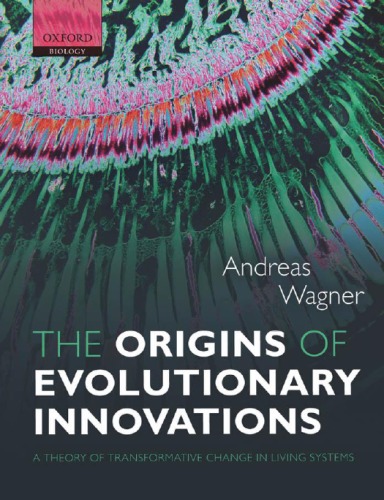

Most ebook files are in PDF format, so you can easily read them using various software such as Foxit Reader or directly on the Google Chrome browser.
Some ebook files are released by publishers in other formats such as .awz, .mobi, .epub, .fb2, etc. You may need to install specific software to read these formats on mobile/PC, such as Calibre.
Please read the tutorial at this link: https://ebookbell.com/faq
We offer FREE conversion to the popular formats you request; however, this may take some time. Therefore, right after payment, please email us, and we will try to provide the service as quickly as possible.
For some exceptional file formats or broken links (if any), please refrain from opening any disputes. Instead, email us first, and we will try to assist within a maximum of 6 hours.
EbookBell Team

0.0
0 reviewsWe are familiar with many examples of innovations (qualitatively new phenotypes that can provide a critical benefit) but have no systematic understanding of the principles that allow organisms to innovate. This book proposes several such principles as the basis of a theory of innovation, integrating recent knowledge about complex molecular phenotypes with more traditional Darwinian thinking.
Central to the book are genotype networks: vast sets of connected genotypes that exist in metabolism and regulatory circuitry, as well as in protein and RNA molecules. The theory can successfully unify innovations that occur at different levels of organization. It captures known features of biological innovation, including the fact that many innovations occur multiple times independently, and that they combine existing parts of a system to new purposes.
It also argues that environmental change is important to create biological systems that are both complex and robust, and shows how such robustness can facilitate innovation. Beyond that, the theory can reconcile neutralism and selectionism, as well as explain the role of phenotypic plasticity, gene duplication, recombination, and cryptic variation in innovation.
Finally, its principles can be applied to technological innovation, and thus open to human engineering endeavours the powerful principles that have allowed life's spectacular success.